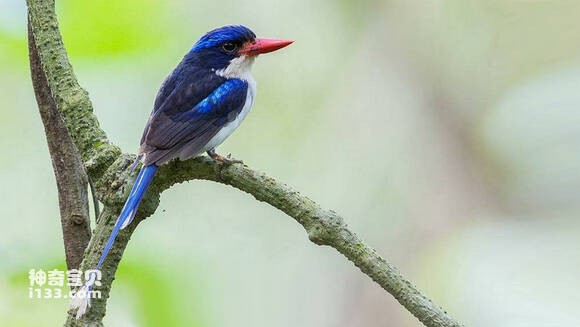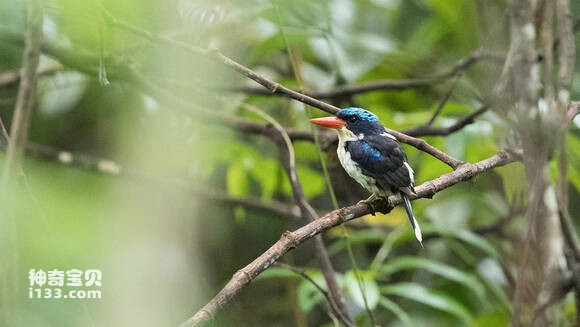Tanysiptera galatea
IUCN
LCBasic Information
Scientific classification
- name:Tanysiptera galatea
- Scientific Name:Tanysiptera galatea,Common Paradise-kingfisher
- Outline:Climbing birds
- Family:
Vital signs
- length:About 22 cm
- Weight:55-69g
- lifetime:No textual research information is available
Feature
Distribution and Habitat
It is found in the Pacific Islands (including Taiwan, Dongsha, Paracel, Zhongsha and Spratly Islands, as well as the Philippines, Brunei, Malaysia, Singapore, Indonesia's Sumatra, Java and Papua New Guinea). Wallace Zone (refers to the area east of the traditional Wallace Line (from the eastern side of Mindanao through the Makassar Strait between Bali and Lombok) and west of Papua New Guinea, including the Indonesian islands of Sulawesi, Nusa Tenggara Islands, the Southwest Islands, the Moluccas (Maluku Islands), East Timor and other islands.)
The emerald emerald is common in the general lowland tropical rain forest, monsoon forests, from sea level to 300 meters. They can even reach a height of 820 meters in some areas.
Appearance
The common fairy jade is 22 cm long, the male bird weighs 58-65g, and the female bird weighs 55-69 g. The adult bird has a blue-purple forehead, blue roof and blue pillows. Eyes first black, cheeks and cheeks blue purple. There is a blue-black half collar on both sides of the neck, from the shoulder blades to the back of the head. Small cover black, middle cover bright sky blue. The rest of the wings are blue and purple above. The tail forms a white belt, and two very slender ribbons are drawn out in the center, with blue outer edges and pure white ends expanded into a pat-like shape. Red mouth, dark brown iris, yellow-brown legs.
The juvenile's head feathers are dark brown, bordered by a yellow eye-first forehead and red elsewhere. The eyebrows are long and dark. Both wings and tail are dark brown. Most of the coverings are lined with bright red. The center of the tail is blue, the underside is pale yellow, with small coverts of black, and the throat and thorax edges are strip
Details
Tanysiptera galatea, Common Paradise-kingfisher, has 15 subspecies.

The fairy emerald is a completely carnivorous kingfisher, and its hunting techniques are roughly the same as those of other species of hunting kingfishers, but it also has its own characteristics. Often hidden in the shade of the tree near the water to prey on fish and shrimp. His head hardly moves while he stands, and his tail wags from time to time. It spends most of its time on the ground searching for food, digging through the soil with its mouth to prey on insects, including snails, beetles, grasshoppers, caterpillars, centipedes, earthworms, and small reptile lizards. Sometimes it makes the feathers very dirty.

Emeralds defend their territory during the breeding season and fight fiercely. Both sexes dig a termite-hollowed nest in a tree four feet from the ground. Size 15 cm x 13 cm. The female usually lays five eggs, and both raise the chicks together. Many of them are fed one by one into the young bird's mouth. Young birds soon leave the nest to live on their own, and it takes three or four months for them to fully develop their adult feathers.
Listed in the International Union for Conservation of Nature (IUCN) ver 3.1:2008 Red List of Birds: Not threatened.
Protect wild animals and eliminate wild meat.
Maintaining ecological balance is everyone's responsibility!








